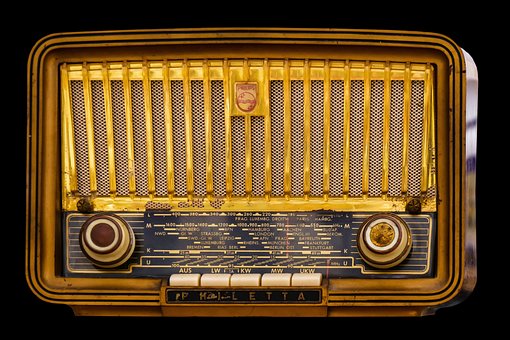 On my walk around town, I pass the health clinic, the fire station, the police station, the troopers offices, the churches, the stores, and the local radio station. I know this radio station has not been around as long as the longest running one.
On my walk around town, I pass the health clinic, the fire station, the police station, the troopers offices, the churches, the stores, and the local radio station. I know this radio station has not been around as long as the longest running one.In 1886, Henirich Hertz showed that radio waves could both be sent and received which lead to wireless telegraphs aka radios being used at sea by 1891 to improve communications.
Within two years, Nicola Tesla demonstrated the first public wireless telegraph in St Louis Missouri. About three years later, while Tesla worked on radio signals, Guglielmo Marconi filed the first patent for his version of a radio but the courts found Tesla's claim of having discovered the radio first Creedence and awarded it to him. In the mean time, Marconi founded the Wireless Telegraph and Signal Company because most radio telegraphs transmitted Morse Code. In 1899, the first recorded request for assistance came from a ship using Marconi's invention.
Just two years later, the first signal traveled carrying the letter S from Ireland to Canada via the Marconi. In 1902, Ham radio was born when Scientific American published an article so people could make their own radio's at home. This increased the number of Ham's to the point the United States Government required all operators register.
During the first decade of the 20th century, someone invented the vacuum tube which amplified radio signals and someone else developed a way for radio ways to carry voice. This lead to a live broadcast from the Metropolitan Opera House to the various boroughs across New York City on January 13, 1910.
At the same time, radio began growing, there was a total lack of understanding of how electromagnetic waves worked so people often thought these "radio" waves caused children to throw up, caused droughts, made bed springs shake, and even cause draughts. This didn't stop radio stations from developing.
One experimental radio station in Detroit broadcast the results of the Harding-Cox presidential election to 500 listeners. Over the coming years more and more things were broadcast including some of the speeches from the Scopes Monkey trial in 1925. During the same time period, the number of radio sets sold rose from 60,000 to over 1.5 million because radios provided more information faster than newspapers could. Furthermore, the number of stations jumped from 28 to over 1400 in the two year period from 1922 to 1924.
At the same time commercial stations were expanding, Universities and colleges applied for licenses to broadcast. Of the approximately 200 licenses granted, about three-fourths had disappeared by 1933. In addition, radio stations began running ads by various companies as a way of funding their operating expenses. During the Depression, people relied more and more to keep abreast of the latest news, listen to the president bring the nation up to date on things, and listen to all the different types of entertaining shows and music.
By the beginning of World War II nine out of ten families had radios and used them three to four hours a day to keep up on what was happening at each front. In addition, about a fourth of the cars being produced came with a radio so people could hear the latest news when they traveled or on their way to and from work. The love of radio continued until the 1950's when television broadcasting began, taking many of the programs that had once been on the radio and producing television versions of them.
At this point, people began predicting the end of radio with the emergence of television but that wasn't right. Much of this had to do with the miniaturization of parts so radios and broadcasting equipment became smaller and more effective, stations began using data to provide more specialized programming designed to appeal to specific groups and new music emerged across the nation.
Where is it headed? The internet of course. Many radio stations broadcast on the internet even though they have physical buildings because they can reach more people that way. Furthermore, people are able to start their own stations easily and transmit them over the internet. So there you have it, radio from telegraph to over the air to internet and its still around.
Let me know what you think, I'd love to hear. Have a great day.
No comments:
Post a Comment